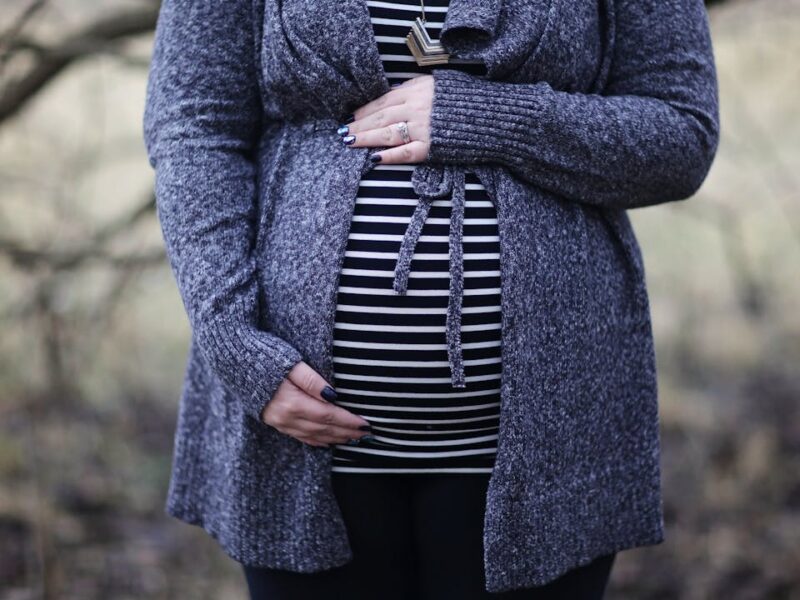Congratulations on your pregnancy! It’s an exciting time filled with anticipation and joy. However, amidst the wonder, you might experience some aches and pains, particularly in your lower back and hips. Anterior pelvic tilt (APT) is a common condition that can contribute to hip pain during pregnancy, and early identification is key to managing it effectively.
What is Anterior Pelvic Tilt (APT)?
Imagine your pelvis as a bowl tilted slightly forward. That’s essentially what happens in anterior pelvic tilt. The front of your pelvis rotates upwards, while the back tilts downwards. This alters the natural alignment of your spine and can lead to various aches and pains, especially in the lower back and hips.
During pregnancy, your body undergoes significant changes. Hormones like relaxin loosen ligaments to accommodate the growing baby. While this flexibility is crucial for childbirth, it can also contribute to APT. Additionally, as your baby grows, your center of gravity shifts forward. This natural shift can further exacerbate APT, causing the “swayback”posture often seen in pregnant women.
Signs and Symptoms of APT During Pregnancy
Identifying APT can be challenging, especially since some women experience it without any noticeable discomfort. However, several signs and symptoms can point towards APT during pregnancy.
Visual Cues:
-
- Swayback Posture: Stand with your back against a flat wall. Ideally, your lower back should have a slight curve that touches the wall at several points. If there’s a significant gap between your lower back and the wall, it might indicate APT.
- Tilted Pelvis: Observe your posture in the mirror. Is your abdomen noticeably protruding forward while your buttocks seem tucked under? This can be a visual indicator of APT.
- Swayback Posture: Stand with your back against a flat wall. Ideally, your lower back should have a slight curve that touches the wall at several points. If there’s a significant gap between your lower back and the wall, it might indicate APT.
Discomfort Points:
-
- Lower Back Pain: APT can strain the lower back muscles, leading to dull aches or sharp pains.
- Anterior pelvic tilt hip pain : Tightened hip flexors, a common consequence of APT, can cause pain in the front and outer hip.
- Groin Discomfort: The discomfort can sometimes radiate from the hips to the groin area.
- Pelvic or Pubic Symphysis Pain: In some cases, APT can contribute to pain in the pelvic or pubic symphysis area.
- Lower Back Pain: APT can strain the lower back muscles, leading to dull aches or sharp pains.
Self-Assessment Techniques
Here are a couple of simple self-assessment techniques you can try at home to see if you might have APT:
- Standing Posture Check: Stand flat against a wall, feet shoulder-width apart. Slide your hand down between your lower back and the wall. It could be a sign of APT if you can fit more than two fingers comfortably in the gap.
- Lying Down Test (Thomas Test): Lie flat on your back with both knees bent and feet flat on the floor. Lift one leg towards your chest, keeping your other foot flat on the floor. Slowly lower the lifted leg towards the floor. If the lower back flattens against the floor before your knee reaches it, you might have tight hip flexors, a common indicator of APT.
Important Considerations
It’s important to understand that:
- APT Can Be Asymptomatic: Not everyone with APT experiences pain. However, if you’re experiencing any of the discomfort points mentioned earlier, it’s worth exploring the possibility of APT.
- Self-Assessment Is Not a Diagnosis: These self-assessment techniques are just a starting point and shouldn’t be considered a definitive diagnosis.
- Seek Professional Guidance: If you suspect you might have APT, consult your doctor or a physical therapist specializing in pregnancy. They can provide a proper diagnosis and recommend personalized treatment options.
Living with APT During Pregnancy
If you’ve been diagnosed with APT, don’t despair. Several strategies can help manage your symptoms and improve your comfort throughout pregnancy. Here’s what you can do:
- Stretching: Regular stretching can help loosen tight hip flexors, a key contributor to APT pain. Focus on gentle stretches that target your hip flexors, hamstrings, and lower back muscles. Your doctor or physical therapist can guide you on safe and effective stretching techniques for pregnancy.
- Strengthening Exercises: Strengthening your core and gluteal muscles can improve pelvic stability and reduce stress on the lower back and hips. However, it’s crucial to consult with your healthcare professional before starting any new exercise program during pregnancy. They can recommend safe and effective exercises tailored to your specific needs.
- Maintaining Good Posture: Be mindful of your posture throughout the day. Stand tall with your shoulders back and relaxed, keeping your core engaged. When sitting, use a supportive chair with .When sitting, use a supportive chair with good lumbar support. Avoid slouching or crossing your legs. If you must sit for extended periods, take frequent breaks to get up and move around.
- Sleeping Positions: Certain sleeping positions can worsen APT pain. Avoid sleeping on your stomach, as it puts undue strain on your back. Opt for sleeping on your side with a pillow between your knees to maintain proper pelvic alignment.
- Supportive Gear: Consider strategically using pregnancy support belts or pillows to improve posture and support your growing belly. However, consult your healthcare professional before using any support products to ensure they suit your needs.
- Body Awareness and Ergonomics: Be mindful of your movements throughout the day. Avoid lifting heavy objects or twisting your body awkwardly. Practice proper squatting and bending techniques to minimize strain on your lower back.
- Stress Management: Stress can worsen pain perception. Techniques like meditation, yoga (modified for pregnancy), or deep breathing exercises can help manage stress and potentially reduce your experience of pain.
Additional Tips for Managing Hip Pain During Pregnancy:
- Heat Therapy: Apply a warm compress to your lower back or hips for temporary pain relief.
- Ice Therapy: Ice packs can help reduce inflammation in the affected areas. However, avoid applying ice directly to your skin. Wrap the ice pack in a thin towel before applying it.
- Maintain a Healthy Weight: Excessive weight gain can put additional stress on your lower back and hips. Maintaining a healthy weight through a balanced diet and regular exercise, as approved by your doctor, can help alleviate pain.
- Comfortable Footwear: Throughout pregnancy, wear supportive shoes with good arch support and a low heel. Avoid high heels, as they can further exacerbate APT.
Conclusion
Identifying and managing APT during pregnancy can significantly improve your comfort and well-being. By being aware of the signs and symptoms and implementing the strategies mentioned above, you can minimize pain and enjoy a more comfortable journey through pregnancy.
Remember, early identification and seeking professional guidance are crucial. Your healthcare provider can help you explore personalized treatment options and ensure a safe and healthy pregnancy.
Want to unlock greater wellness?
Listen to our friends over at the Wellness + Wisdom Podcast to unlock your best self with Drew Canole of Organifi:




 5 Healthy Wholefood Snacks to Beat Your Cravings
5 Healthy Wholefood Snacks to Beat Your Cravings